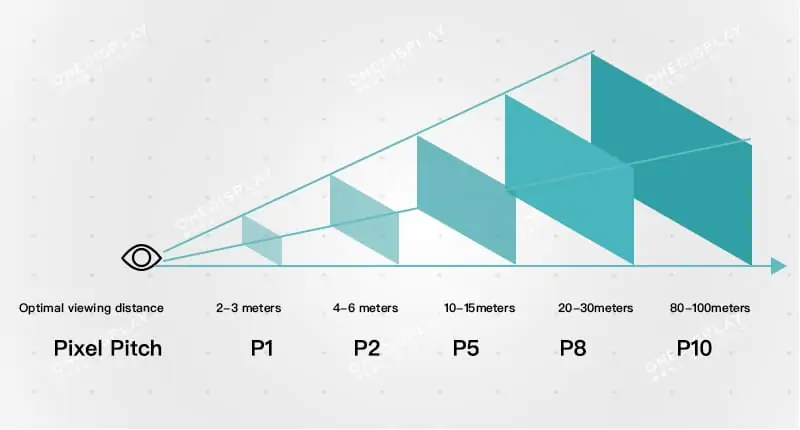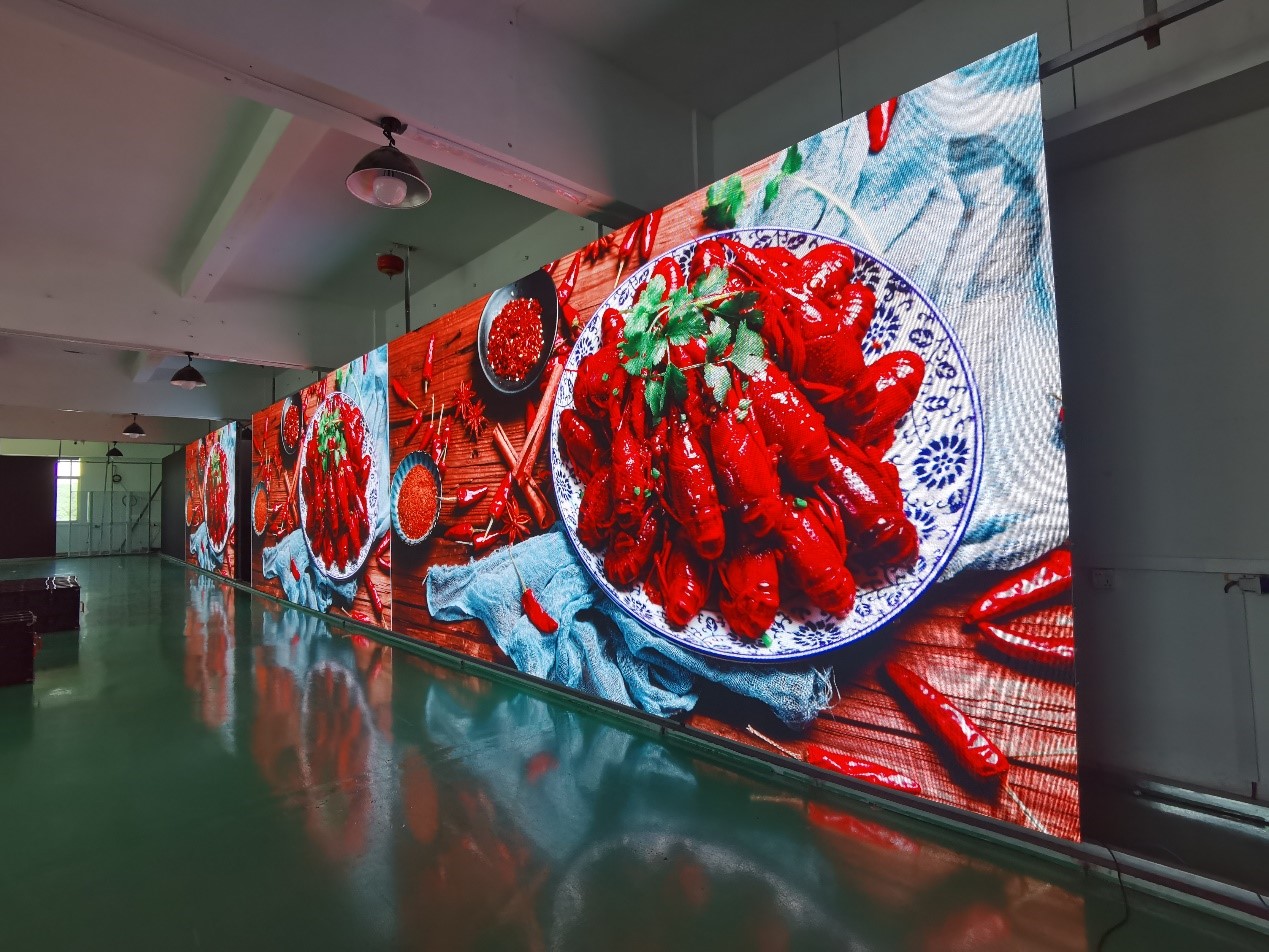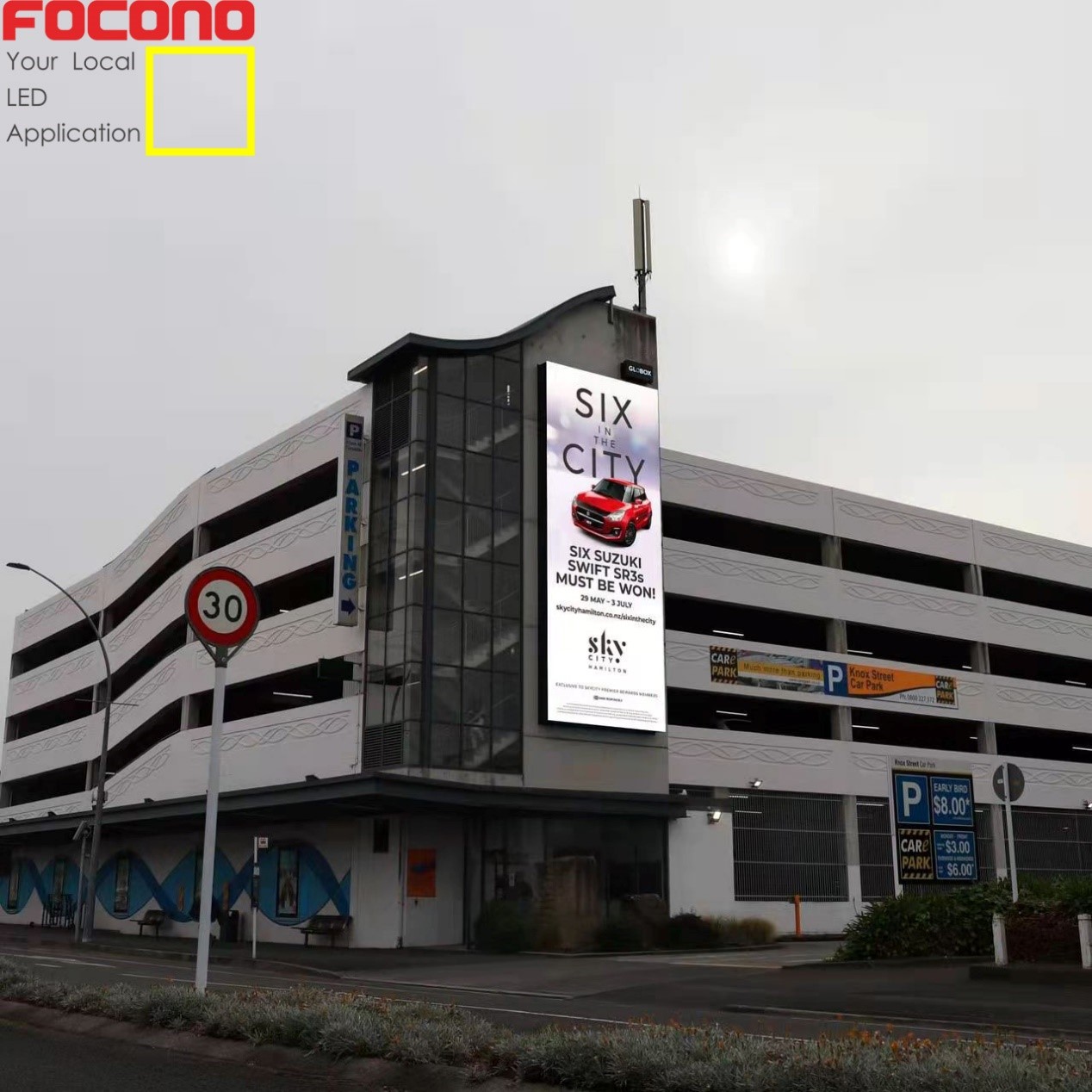Ifyou've been researching your next LED screens project, there’s a good chancethat you've heard the term pixel pitch somewhere before. You might also hear itcalled dot pitch or line pitch, or stripe pitch - they're different terms forthe same thing.
LEDvideo wall installations continue to transform spaces around the world.Churches, schools, offices and retailers are creating vibrant, dynamic,memorable experiences in a variety of indoor and outdoor occasions. If you'reconsidering a wall, one of your most important choices is the pixel pitchselection, but you may be wondering, what is pixel pitch? How does a pixelpitch affect the cost? What are important considerations when choosing a pixelpitch? Let’s take a look at how you can make the right pixel pitch choice foryour LED video wall project.
What is Pixel Pitch?
Inits simplest terms, pixel pitch is a measurement of the space between thecenter of one pixel to the center of the next one, providing a reference pointfor the density of pixels on an LED display. The pixel pitch can be measuredpurely in terms of distance, i.e. millimeters, or as a rate, i.e.dots-per-inch.
Thepicture itself is comprised of vast amounts of individual dots, or pixels,illuminating and fading in turn.
Pixelpitch is essentially a measure of their density.
Well,a smaller pixel pitch indicates that you can fit more pixels onto a screen,providing a higher resolution and making the actual image more richly detailed.That makes a screen's pixel pitch instrumental in working out the optimalviewing distance, and how far away people should be from it for the bestviewing experience.
Why Is Pixel Pitch Important?
LedScreens, when executed well, should be driven by vivid imagery with the mostoptimal viewing distance. The lower the pixel pitch, the more defined theimagery. This is essential if the signage is something a viewer would standclose to; the resolution doesn’t degrade the closer the viewer gets. You wouldn'twant a screen where a viewer can see the black space between pixels, so you'llwant a suitable pixel pitch.
Pixel Pitch vs. Resolution
Often,when choosing a display, you hear statistics about the resolution - for example“1080p" or “4k" displays. The pixel pitch for your LED wall is adirect measure of the potential resolution: The lower the pixel pitch, thehigher the potential resolution. For most LED wall applications, 1080presolution is available using the standard rules of thumb for pixel pitch anddistance. If you desire higher resolution, a lower pixel pitch may be in order.But an important consideration is the quality of the image and content
thatyou're rendering on the LED wall. For example, a low-quality image will resultin low-resolution results regardless of the pixel pitch you've selected.

How do I know which pixel pitch is best for me?
That'swhat our experts are here for! The right viewing distance is a hugely importantelement in any king of LED digital display. and it's largely dictated by thespecific application that you've got in mind for your LED digital display.Technically, you could in theory combine any screen and pixel pitch you like,but a pixel pitch that ends up being disproportionate to your screen size canend up providing a very poor user experience, or cause your budget to balloonunnecessarily (or even both).
Ifyou're planning on incorporating LED indoor screens into a retail or commercialenvironment, for example, your key demographics are likely going to beexperiencing that content from a relatively short range of only a few feet.This means that on balance, you’d generally be well-advised to use screens witha shorter pixel pitch so that the image and text are rendered in sufficientdetail for your viewers to properly read or otherwise enjoy.

Onthe other hand, if you’re thinking of outdoor LED advertising boards to bedisplayed in cities or large urban environments or electronic display boardsfor sports stadiums, then choosing screens with a larger pixel pitch is farmore efficient, from both a financial and energy-intensive perspective. A largescreen with an overly short pixel pitch will end up costing unnecessarily largeamounts of money on rendering images
inequally unnecessary detail, especially since it won’t be noticed or properlyappreciated by your viewers.

Soto recap:
1) Pixel pitch refers to the density of the pixels on an LED screen
2) Different pixel pitches will be suitable for different screens, depending on what their viewing distance will be
3) Smaller screens with closer viewing distances generally fare better with shorter pixel pitches
4) Larger screens with longer viewing distances are best served with larger pixel pitches
So that's all the basics covered! If you have any further questions or you need a bit more detail, we're only too happy to help here at Focono LED. We offer an extensive range of led screens solutions for you to choose from and serve a wide array of sectors, including hospitality, finance, and health and leisure.We know this technology inside out, and exactly how it can be used to achieve your goals as a business. To find out how we can help you, feel free to e-mail us at focono@focono.com





